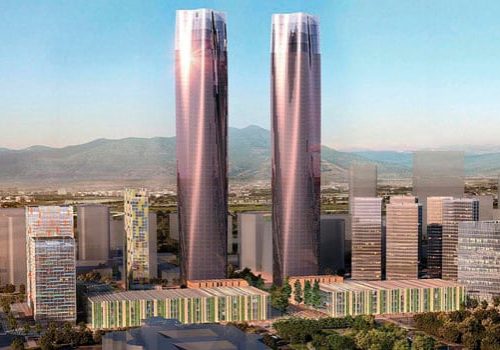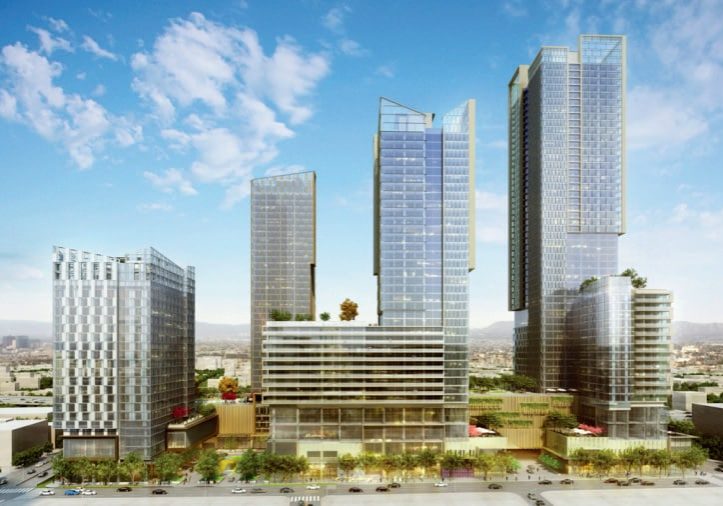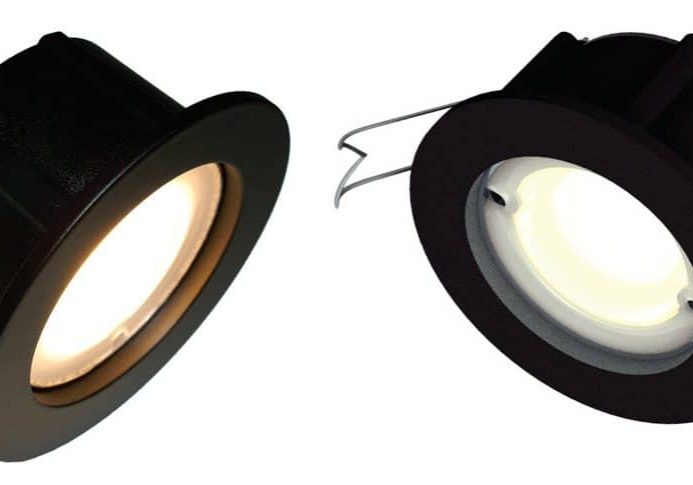ThyssenKrupp Elevator installs custom units for the Perot Museum of Nature and Science in Dallas.
Resembling a giant quartz crystal embedded in a mountainside, the 54-ft.-long, continuous-flow, glass-encased escalator at the Perot Museum of Nature and Science in downtown Dallas is one of the first in the world to extrude outside a building’s main structure. Described by the Dallas Morning News as the “boldest piece of modern architecture to hit Dallas,” the concrete-panel building is shaped like a cube that appears to float above a landscaped platform. It spans five stories. Its distinctive panoramic escalator (indeed, its entire vertical-transportation system) is among the building’s most remarkable features. Provided by ThyssenKrupp Elevator, the escalator is housed in a 150-ft.-long glass tube. Thom Mayne of Morphosis Architects, elaborates:
“[I] opened up the southeast corner of the building in order to bring daylight into the museum. [I] made the museum’s major circulation device — the escalator — a salient feature of the exterior by enclosing it in a glass cartridge smacked onto the south façade. The exposed escalator is the final move in a sequence that begins at the lobby level; where it pushes out, the cartridge is cantilevered from a beam that, in turn, is cantilevered from another beam. The escalators only go up, and visitors are encouraged to start [their museum visit] at the top.”
Besides Steve Rhodes, manager at ThyssenKrupp Elevator’s Dallas office, ThyssenKrupp Elevator employees involved in the project included New Construction Sales Manager Carl Alvord, Construction Manager David Lynn and Superintendent Tommy Potts, along with District Manager Jason Cobb. The structural engineer was Datum Engineers, Inc.
There are two additional escalators connected to the one that extrudes.
Opening its doors on December 1, 2012, the Perot Museum houses 11 permanent exhibit halls, along with an auditorium, 3D theater, outdoor play area and café within 180,000-sq.ft. It is named for the Perot family, which donated US$50 million toward its construction. It offers immersive and interactive exhibits, where visitors may experience such phenomena as virtual sports and extreme weather. The building itself is an exhibit of sorts — a showcase for environmental sustainability that boasts features such as a rainwater-collection system that provides 74% of the museum’s water needs. Its design is expressive. Mayne states:
“It is a fundamentally public building — a building that opens up, belongs to and activates the city. It is a place of exchange. It contains knowledge, preserves information and transmits ideas; ultimately, the public is as integral to the museum as the museum is to the city.”
The building’s vertical-transportation system is part and parcel of its design. It includes two glass-backed elevators that allow passengers to watch the system’s inner workings, an activity that particularly fascinates children. Escalators and staircases are both housed in a glass and steel atrium filled with natural light. The entire system consists of:
- Three panoramic geared passenger elevators
- A 15,000-lb.-capacity freight elevator, used for moving large exhibits such as dinosaur bones
- One hydraulic kitchen elevator
- Three escalators that only go up, encouraging visitors to start at the top and work their way down
ThyssenKrupp Elevator reports the project’s complexity required it to be divided into phases. It took approximately a year and a half, with general contractor Balfour Beatty breaking ground on May 6, 2010, and completing the work on November 12, 2012. It involved careful coordination between Balfour Beatty and ThyssenKrupp Elevator. The escalators, due to rise and limited accessibility, were delivered as six separate components on six flatbed semi trucks, Rhodes said. When “showtime” came, ThyssenKrupp Elevator was ready. Lynn remembers:
“Installation was on a Saturday morning, and the hoisting of the escalator sections was a carefully orchestrated process that required each section to be hoisted into place using a crane. In order to accomplish aligning and securing the pieces into place in a safe manner, many hours of planning and preparation were required.”
The work did not stop there. Once the escalator was assembled and in place, a plywood casing was built around it to shield it from damage as the escalator’s steel and glass enclosure was built.
The unveiling of the escalators revealed sleek, stylish, yet powerful equipment. From ThyssenKrupp Elevator’s Velino line of commercial-duty escalators, the units boast slimline balustrades, controllers with dual central processing and variable-voltage/variable-frequency drives. Described by ThyssenKrupp Elevator as among the most technologically advanced on the market today, the Velino escalators each have a theoretical capacity of approximately 6,750 riders per hour. A 40-in.-tall balustrade makes them remarkably light, and a nearly invisible handrail makes it appear as if the handrail is sitting directly on top of the glass. Their specifications are:
- Rise: 27 ft.
- Incline: 30°
- Step width: 32 in.
- Speed: 100 fpm
- Cladding: Stainless steel
- Balustrades: Stainless steel
Throughout the job, safety was a priority, ThyssenKrupp Elevator notes. Hours of planning were needed to meet OSHA requirements. In the end, the company is proud to have been part of such a special project. States Lynn: “Due to the uniqueness of the job, our guys were excited to be a part of this challenging project. In a sense, it was historical.”
Get more of Elevator World. Sign up for our free e-newsletter.










